Intel SSD 510-Series 250 GB Review: Adopting 6 Gb/s SATA
After defining the high-end SSD market with its X25-M, Intel is finally ready with its first 6 Gb/s solid-state drive, the SSD 510-series. Does the company's latest follow in its predecessor's footsteps, or does OCZ's Vertex 3 lineup go uncontested?
Intel Relinquishes The High-End
Back when Intel launched its first-gen X25-M, the company really validated solid-state storage as an option for enthusiasts. Up until that point, SSDs were neat, expensive toys that power users with money to blow installed for bragging rights. The X25-M was still pricey, but it was at least within reach for anyone building a Core i7-based workstation—the exact market Intel wanted to conquer.
I specifically remember sitting in on its briefing at IDF 2008, where representatives told us outright that what it had seen from SSDs up until that point was insufficient enough to compel the company’s engineers to create its own controller. The X25-M was, at the time, the best-performing SSD we had ever tested (Intel’s X25-M Solid State Drive Reviewed), its 10-channel architecture based on multi-level cell NAND running faster than even some SLC-based competitors.
Needless to say, Intel lit the fires of innovation that drove companies like JMicron, Indilinx, Marvell, and SandForce to design and improve their own controllers. Between then and now, we’ve seen the performance crown bounce around. But the benchmark by which SSDs continue to be measured is Intel’s X25-M (now in its second generation, employing 34 nm NAND).
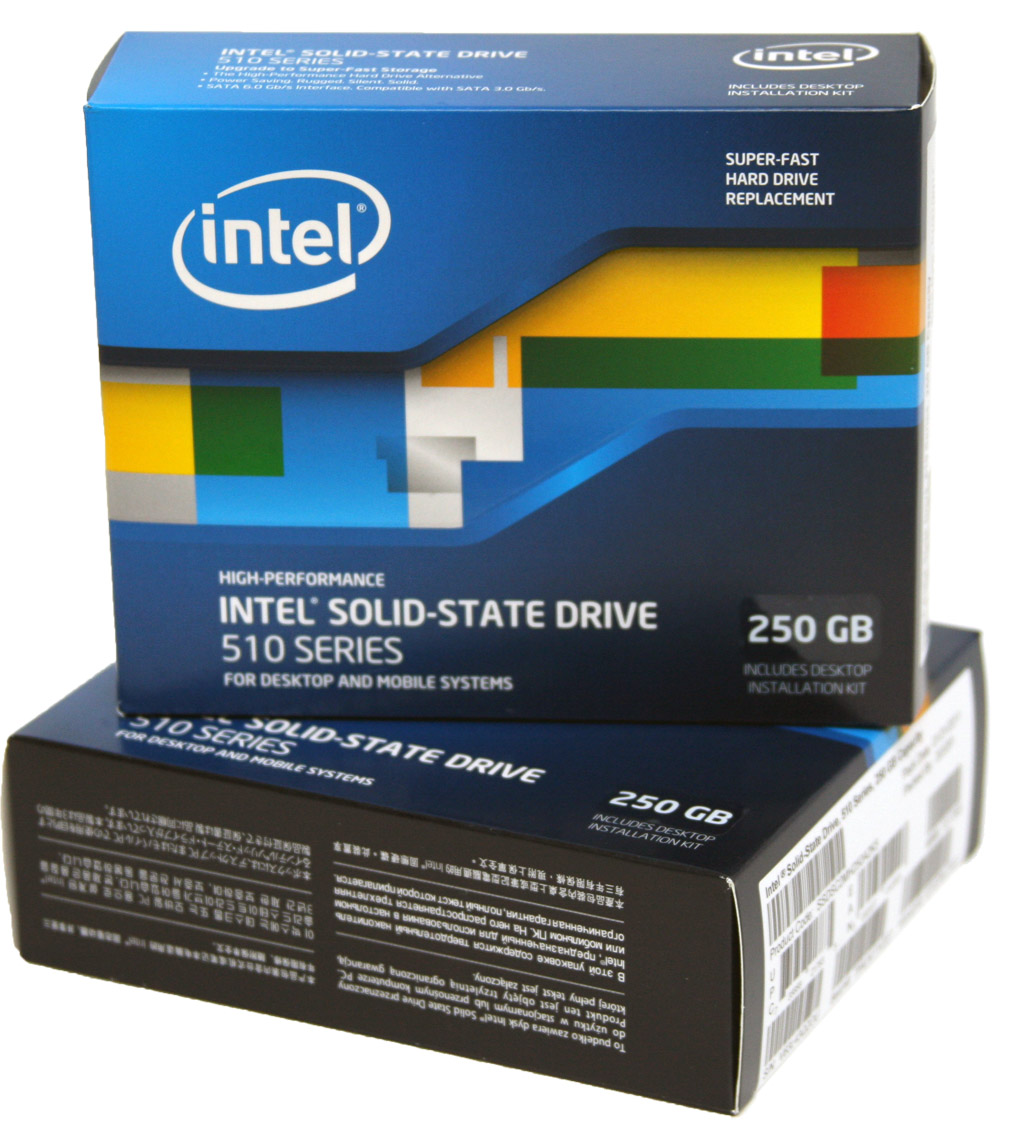
How Do You Follow That Up?
Intel designed its first controller because it wanted in on the SSD market, but wasn’t satisfied with existing controllers. We were impressed with the result. As time passed and competing drives started overtaking the X25-M, we wondered how Intel might respond.
Imagine our surprise when we learned several weeks ago that Intel was actually happy with the state of controllers, and would be selecting a third-party component to drive its next-generation drives.
On one hand, this sorta makes sense. Intel originally presented its SSDs as the key to getting maximum performance from its Nehalem-based platforms, which were previously getting hampered by conventional magnetic storage. Confronted by plenty of new, faster drives, Intel’s original mission is accomplished, and its fastest processors no longer face an artificial bottleneck at the hands of hard drives.
Get Tom's Hardware's best news and in-depth reviews, straight to your inbox.
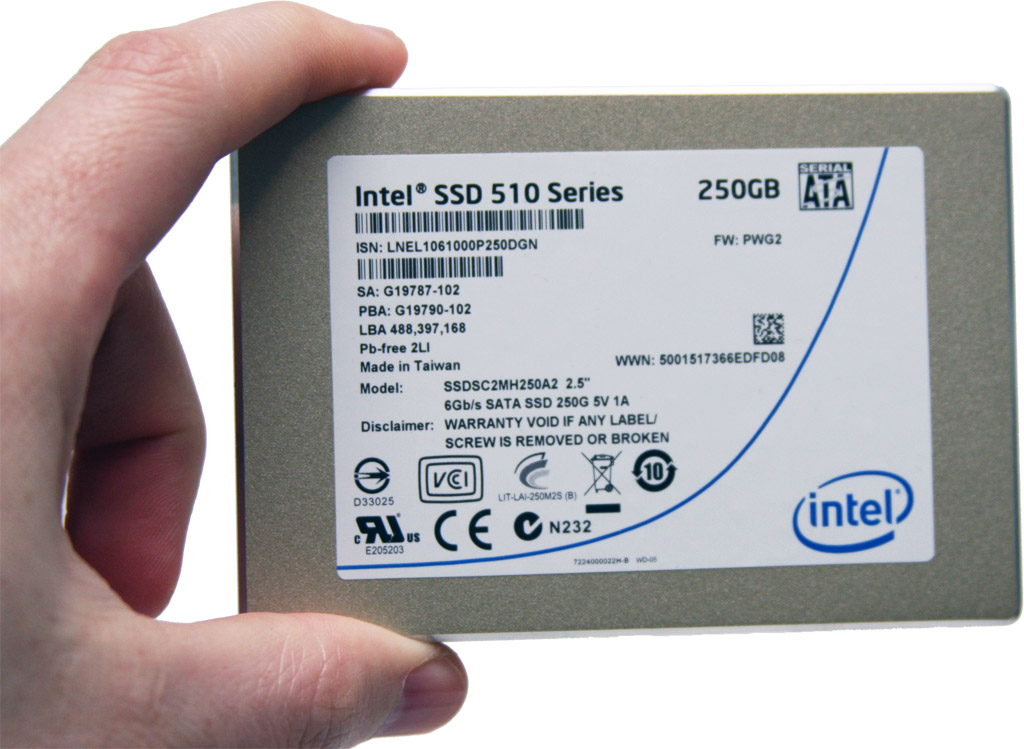
On the other…damn. We all love a good fight (how else do you explain the existence of the UFC?). Knowing full well that SandForce-based drives are among the fastest currently available and its own second-generation part is weeks from retail availability in OCZ Vertex 3 drives, the choice to go with any controller vendor other than SandForce would seemingly be a setup for defeat.
Inside The SSD 510
And sure enough, Intel chose Marvell’s 88SS9174. This isn’t the same 88SS9174 seen in Crucial’s C300, though. It’s of the –BKK2 persuasion—Marvell’s second-generation 6 Gb/s controller. The C300 employs the first-gen –BJP2. We haven’t reviewed anything with –BKK2 in it yet. With that said, Intel claims the SSD 510’s firmware is its own, and the drive’s performance is optimized for a specific usage model. I won’t spoil the surprise. It’ll become very clear in the benchmarks.
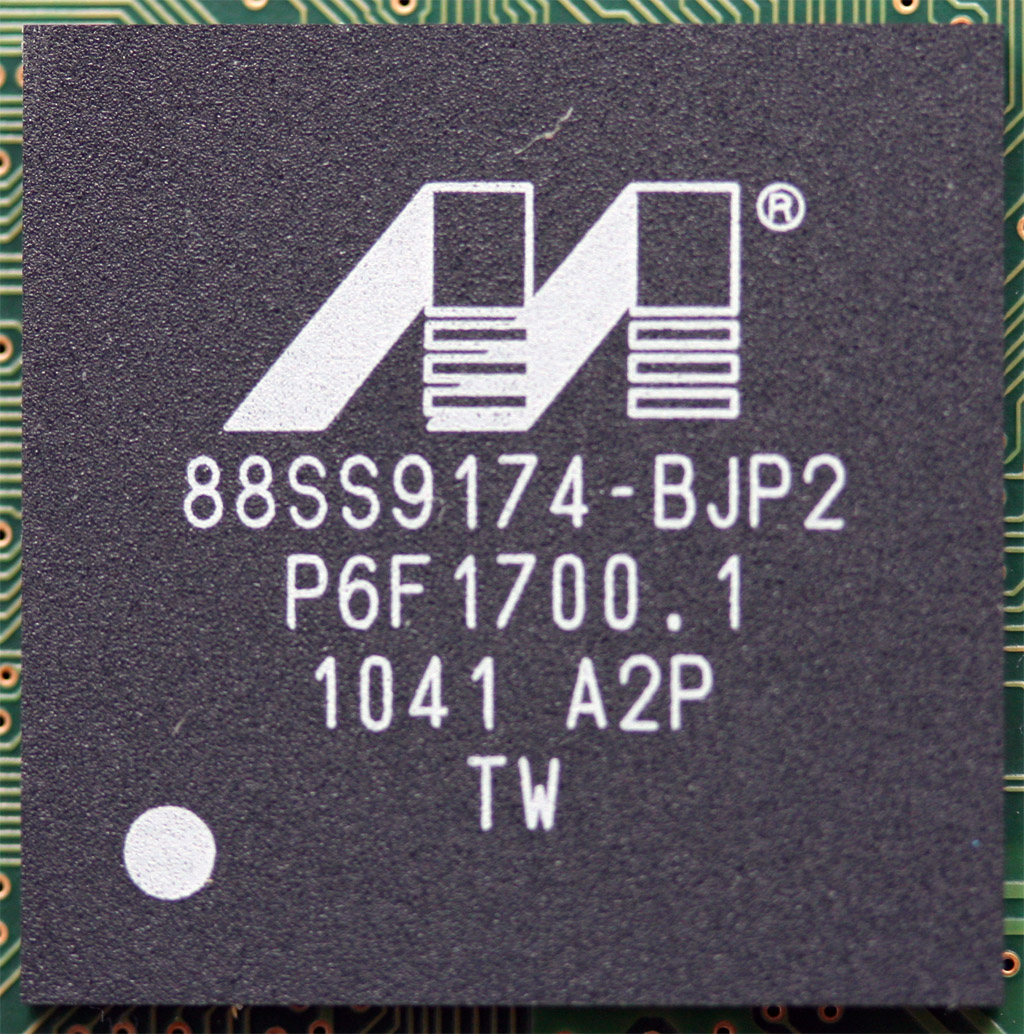
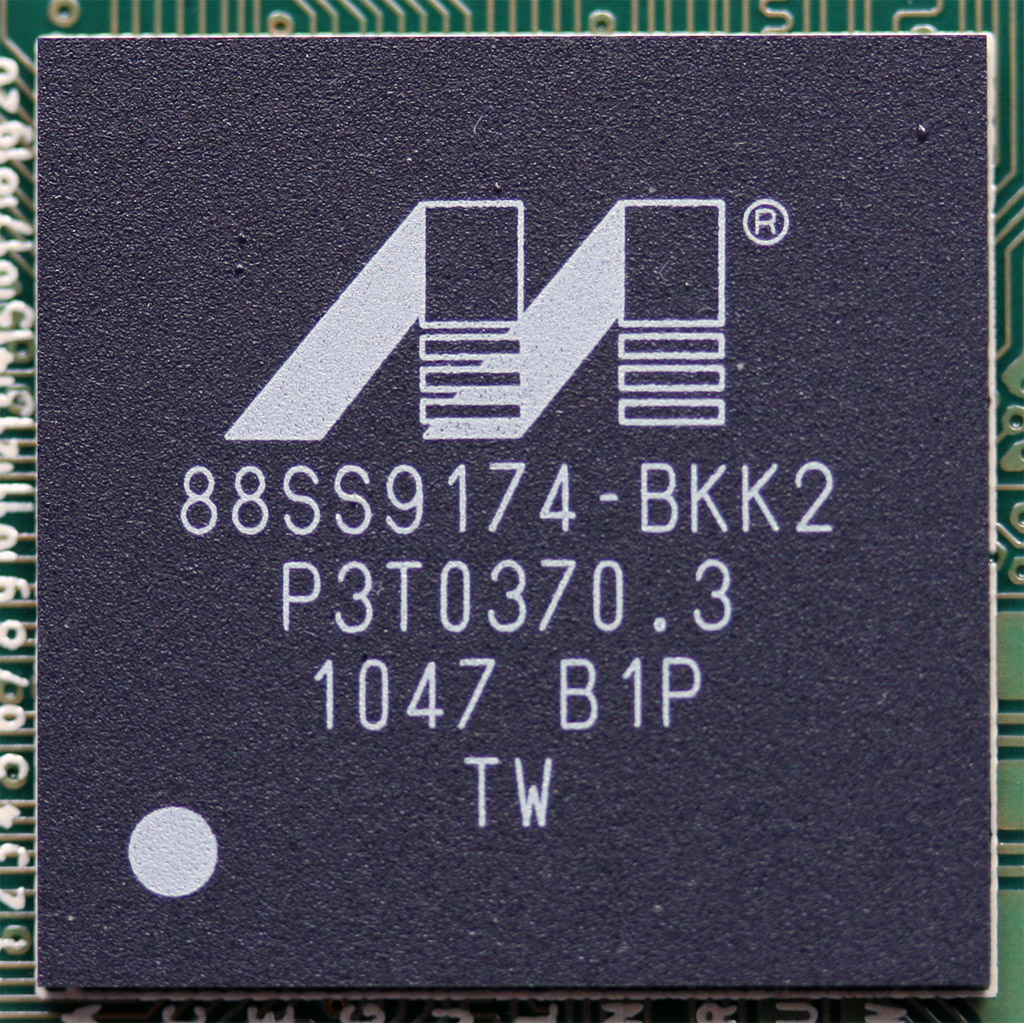
Intel also uses its own 34 nm NAND—interesting, given the controversy we see elsewhere as a result of vendors shifting over to 25 nm flash. The company will ship two versions of the SSD 510: 120 GB and 250 GB. The 250 GB model we have in the lab employs 16 multi-die packages, each adding 16 GB to the drive’s capacity. Intel adds 128 MB of DDR3-1333 from Hynix as a buffer. Of course, both drives fit into a 9.5 mm form factor.
All of that hardware working together yields what I consider a perplexing spec sheet, given Intel’s existing 3 Gb/s SSDs and a competitive landscape recently ravaged by OCZ’s Vertex 3 (OCZ's Vertex 3: Second-Generation SandForce For The Masses).
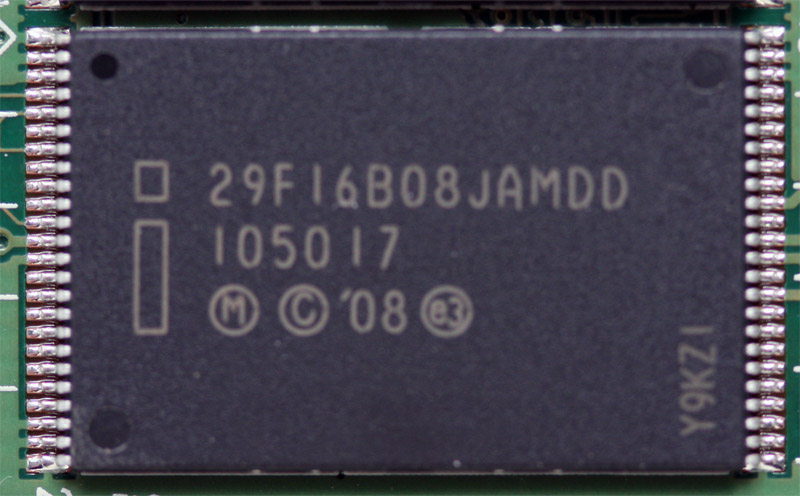
The random read and write performance from this 250 GB drive is lower than the X25-M. In contrast, the forthcoming Vertex 3’s random 4 KB writes are rated at up to 60 000 IOPS. Intel is much more competitive in sequential reads, which should peak at up to 500 MB/s over a 6 Gb/s connection. OCZ’s offering is expected to maintain an advantage in writes though, offering 525 MB/s to Intel’s 315 MB/s.
| Header Cell - Column 0 | Intel SSD 510 250 GB | Intel SSD 510 120 GB | OCZ Vertex 3 240 GB | Intel X25-M G2 160 GB |
|---|---|---|---|---|
| Sequential Read Performance | Up to 500 MB/s | Up to 400 MB/s | Up to 550 MB/s | Up to 250 MB/s |
| Sequential Write Performance | Up to 315 MB/s | Up to 210 MB/s | Up to 525 MB/s | Up to 100 MB/s |
| Random Read Performance | Up to 20 000 IOPS | Up to 20 000 IOPS | Row 2 - Cell 3 | Up to 35 000 IOPS |
| Random Write Performance | Up to 8000 IOPS | Up to 8000 IOPS | Up to 60 000 IOPS | Up to 8600 IOPS |
| NAND Flash Components | 34 nm MLC | 34 nm MLC | 25 nm MLC | 34 nm MLC |
| Raw NAND | 256 GB | 128 GB | 256 GB | 160 GB |
| Interface | SATA 6Gb/s | SATA 6Gb/s | SATA 6Gb/s | SATA 3Gb/s |
| MSRP | $584 | $284 | $500 | $400 |
You can expect the 120 GB model’s performance to drop quantifiably. Why does this happen? Remember that SSDs achieve their best performance numbers by spreading requests out across multiple flash devices. Intel’s X25-M employed a 10-channel architecture. The SSD 510-series uses an eight-channel design.
My guess would be that Intel uses half as many of the same NAND modules on its 120 GB SSD 510. In the real-world, you’d really need to push a lot of concurrent requests to best demonstrate the difference between the two drives, though—and as we’re about to see, those aren’t the environments where this SSD performs well, anyway.
Current page: Intel Relinquishes The High-End
Next Page Making The Difficult Decisions-
JohnnyLucky I made the rounds and read other 510 reviews. I also read the comments in a lot of forums. There is quite a bit of disappointment with the performance and price of the Intel 510. Perhaps Intel will redeem itself with the next ssd series.Reply -
eklipz330 i love when small companies like sandforce can make massive companies shake in their boots... really puts another meaning on competitionReply -
nitrium Something ALL reviewers seem to ignore is what sort of queue depths average users experience. This has been addressed in a thread on www.xtremesystems.org. The facts appear that most disk activity has a queue depth of 1. Yes, ONE. It very rarely spikes above 4. Booting Windows 7 x64 requires 190 IOPS(!) - 20,000+ IOPS on these drives are literally NEVER going to be utilized by most users in anything they do in day to day work. Almost no one buying these SSD drives is using anything remotely near their capability. It looks to me like this is all just technical benchmark BS that are of no use to the end user whatsoever... aside from bragging rights of course.Reply -
cangelini nitriumSomething ALL reviewers seem to ignore is what sort of queue depths average users experience. This has been addressed in a thread on www.xtremesystems.org. The facts appear that most disk activity has a queue depth of 1. Yes, ONE. It very rarely spikes above 4. Booting Windows 7 x64 requires 190 IOPS(!) - 20,000+ IOPS on these drives are literally NEVER going to be utilized by most users in anything they do in day to day work. Almost no one buying these SSD drives is using anything remotely near their capability. It looks to me like this is all just technical benchmark BS that are of no use to the end user whatsoever... aside from bragging rights of course.Reply
IMO, don't buy a premium SSD for booting Windows. In fact, I go for weeks at a time without rebooting at all.
Link to the XS thread you're referencing? We going to be putting more effort into quantifying real-world storage workloads in the next two months, given some new software. This could definitely help mold the work we do. The goal, of course, is real-world relevance.
Cheers,
Chris -
nitrium Sorry for not providing a proper link. Here it is:Reply
http://www.xtremesystems.org/forums/showthread.php?t=260956
My beef with this whole synthetic benchmarking is that I think the vast majority of users are unaware that getting this SSD or that SSD will make absolutely no material difference. Why don't reviewers benchmark actual things people are interested in? e.g. booting Windows 7, loading Dragon Age Origins/COD Black Ops, archiving a folder, launching Thunderbird/Firefox/Photoshop, running a virus scan? Is it because there will be no material difference between any performance SSD manufactured in the last 3 years? The thread above also notes that aside from SYNTHETIC benchmarks, raiding SSDs makes absolutely no difference in anything you do in a typical day to day environment.
Yes, absolutely enterprise class users might get something tangible out of these new drives, but I suspect they are not the core audience of Tom's Hardware. -
cangelini No worries nitrium, and thank you for the link.Reply
I'd agree that the synthetic measurements are primarily used to draw "worst-case" comparisons. There is a very deliberate reason I wanted to break down most of the results by queue depth this time around--specifically to demonstrate how wildly performance can differ based on QD. And as you mention, at a QD of 1, an SSD is doing a lot less for the average desktop user than it would if you were hammering it with the concurrent requests of a database server.
If you look at the task breakdown of PCMark Vantage, it comes relatively close to real-world usage. My problem with that metric is its consistency. Futuremark is aware that Vantage wasn't written to test SSDs optimally, and I'm expecting the company to come out with something very soon that improves its utility in that regard.
I personally don't see anything *wrong* with running real-world tests, like Windows start-up, level-loading, or launching a sequence of apps. The only challenge there is time. Adding more benchmarks is never a problem--it's what the readers want to see.
I'll go through the XS thread with a couple of staffers and see what we come away with.
Cheers nitrium,
Chris -
Nexus52085 Well, I'm sincerely happy to find out that the Crucial C300 I bought yesterday still holds up nicely against the new SSDs from the other heavy hitters. Thanks for the review, Tom's!Reply -
nitrium I think of some of this heavy focus on benchmarks on SSDs (and really, all hardware sites do it, so I'm not singling this site out specifically) is a bit like measuring say the theoretical texture fill rate of the latest and greatest GPU, but forget to mention that most people will never actually use half of it cos they're running 1920x1080 XBox360 port-acrosses. Instead GPUs are measured at variety of screen modes, in a variety of games... i.e. real world benchmarks. There is a reason for this. Frankly I could care less what an SSD scores in CrystalMark or IOMeter at a queue depth of 32 or whatever. From the Xtremesystems thread above it dawned on me that perhaps reviewers HAVE to rate SSDs using synthetic benchmarks, because otherwise most of these drives would be nearly indistinguishable.Reply
Oh, and in all my ranting I forgot to thank you (and your colleagues) for the excellent work you do. It is very much appreciated! -
ubercake Seems like a half-a#$ed effort on Intels part to get to the next gen. Why take away the two-lane advantage? Intel could have improved upon their own product. Other companies have drastically improved their offerings, while some benchmarks show Intel's new drives performing similarly to the X25-M. Disappointing is a good word for it. Seems like the competition in the SSD area has been reduced by removing the Intel controllers from the mix.Reply
If you're going to jump to the next level, it makes it really hard to consider Intel at this point. -
tipoo SATA 3 is going to become a bottlneck before it becomes the standard on most shipping PC's.Reply
